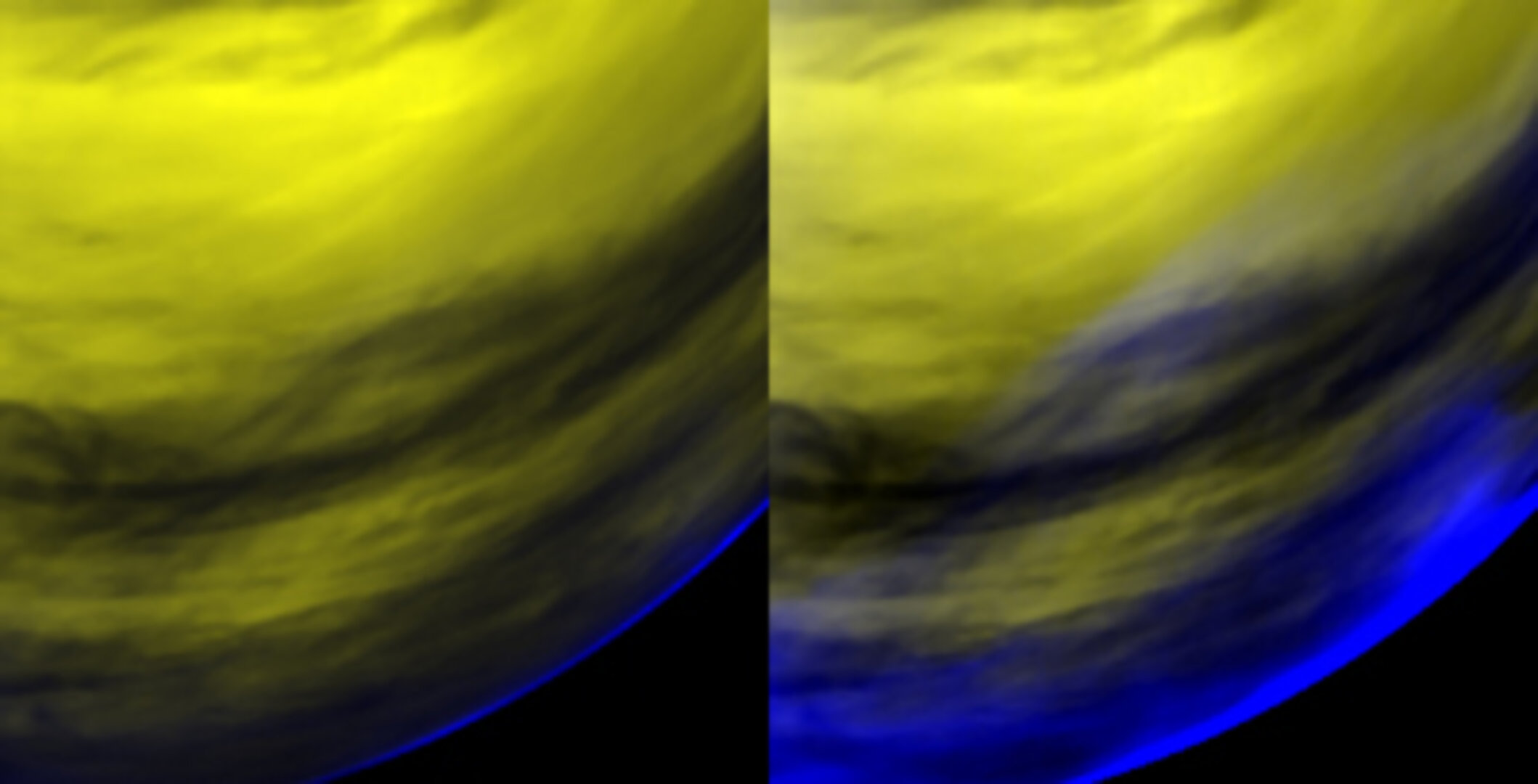

Zoom-in on Venus’ oxygen airglow
This false-colour view was obtained on 26 August 2006 by the Visible and Infrared Thermal Imaging Spectrometer (VIRTIS) onboard ESA’s Venus Express, at a distance of 65 000 kilometres from Venus’ surface, from the south. The horizon seen at the bottom-right in both panels is about Venus’ equator. The top left of the images is located at about 60 degrees south latitude; the images centre is at 130 degrees west longitude.
Both panels show the oxygen airglow in the night-side atmosphere of Venus, fully detectable only at specific infrared wavelengths. The images are built by a combination of colours: the airglow is blue, corresponding to 1.27 micrometres; yellow corresponds to 1.7 micrometres, and its modulation is due to the different cloud thickness in different areas.
On the right panel the airglow appears in atmospheric structures similar to ‘clouds’. In the left image a slightly different colour scale has been used to emphasize the brightening of the limb (side view of the atmosphere) due to the airglow itself.
The fluorescence of the airglow is produced when oxygen atoms, ‘migrating’ from the day-side to the night-side of the atmosphere of Venus under the push of the so-called sub-solar and anti-solar atmospheric circulation, recombine into molecular oxygen (or ‘O2’) emitting light.





